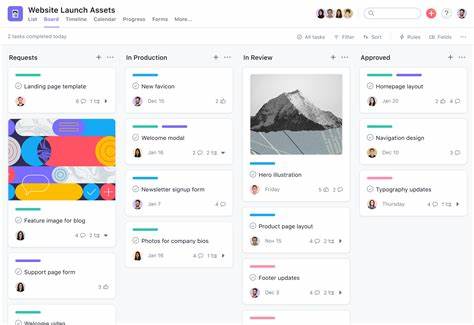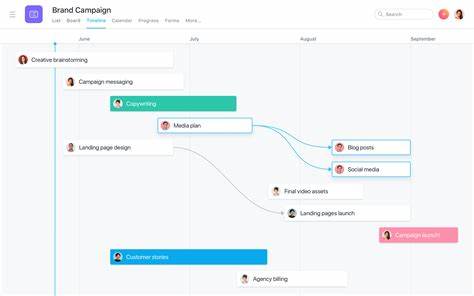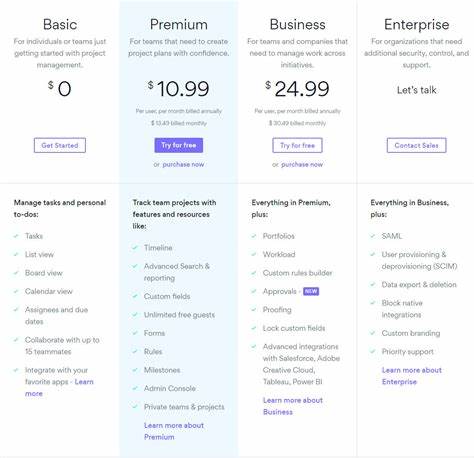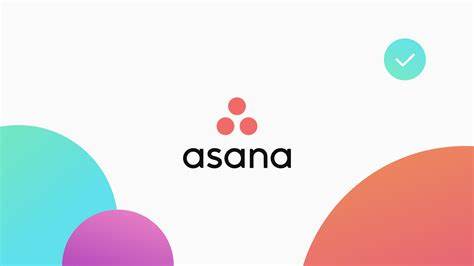Effective project management has become a crucial differentiator for organizations seeking to stay ahead of the curve. Asana, a leading project management and team collaboration platform, has emerged as a game-changer in this landscape, offering a comprehensive suite of tools to streamline workflows and foster seamless collaboration.

Table of Contents
What is Asana?
Asana is a cloud-based project management and task organization software that helps teams and individuals plan, organize, and manage their work more efficiently. Initially launched in 2008, Asana has since grown into a powerhouse, serving businesses of all sizes, from small startups to large enterprises.
Why Use a Project Management Tool?
In today’s dynamic business environment, where deadlines are tight and collaboration is essential, the need for a reliable project management tool has become increasingly apparent. Asana addresses this need by providing a centralized platform that enables teams to track tasks, assign responsibilities, and monitor progress, all while facilitating effective communication and coordination.
Understanding Asana’s Pricing Structure
Asana offers a range of pricing plans to cater to the diverse needs of its user base. Let’s delve into the details of these plans and their associated costs.
Asana’s Pricing Tiers
Free Plan: Basic Features for Individuals and Small Teams
The Asana Free plan is designed for individual users and small teams, providing access to essential project management features such as task creation, assignment, and due dates. This plan is an excellent starting point for those new to Asana or with limited budgets.
Premium Plan: Advanced Features for Growing Teams
The Asana Premium plan unlocks a wealth of advanced features, including custom project templates, advanced search, and reporting capabilities. This plan is well-suited for growing teams that require more sophisticated project management tools.
Business Plan: Comprehensive Features for Enterprises
The Asana Business plan is tailored for larger organizations and enterprises, offering comprehensive features such as portfolio management, custom branding, and advanced security controls. This plan is ideal for businesses that require enterprise-level project management solutions.

Key Features and Benefits
Asana offers a robust set of features that cater to the needs of modern project management and team collaboration.
Task Management: Creating, Assigning, and Prioritizing Tasks
At the core of Asana is its powerful task management capabilities. Users can easily create, assign, and prioritize tasks, ensuring that everyone on the team is aware of their responsibilities and deadlines.
Project Management: Organizing and Tracking Projects
Asana provides a structured approach to project management, allowing users to organize their work into projects, set milestones, and track progress with ease.
Team Collaboration: Facilitating Teamwork and Communication
Asana fosters seamless team collaboration by enabling real-time communication, file sharing, and task discussions, ensuring that everyone stays on the same page.
File Sharing and Storage: Centralizing Your Files
Asana offers integrated file storage and sharing capabilities, allowing teams to access and manage their project-related documents in a centralized location.
Integration with Other Tools: Connecting with Popular Apps
Asana seamlessly integrates with a wide range of popular third-party tools, such as Google Suite, Slack, and Outlook, enabling users to streamline their workflow and enhance productivity.
Cost Breakdown
Asana‘s pricing structure is designed to accommodate the diverse needs of its user base, with both monthly and annual billing options available.
Monthly vs. Annual Billing: Comparing Costs
Users have the flexibility to choose between monthly and annual billing plans. Opting for the annual billing option often results in significant cost savings compared to the monthly plan.
Additional Features and Costs
Asana offers a range of add-on features and services, such as increased storage capacity and advanced reporting, that are available for an additional cost.
Hidden Fees and Surcharges
It’s essential to carefully review Asana‘s pricing structure to ensure that there are no hidden fees or surcharges that may impact the overall cost of the subscription.

Factors Affecting Pricing
Several factors can influence the overall cost of an Asana subscription, including the number of users, storage needs, and the specific features required.
Number of Users: Scaling Your Plan Based on Team Size
The Asana pricing structure is scalable, allowing organizations to adjust their plan as their team size grows or changes.
Storage Needs: Additional Storage Costs
For users who require more storage capacity beyond the plan’s default allowance, Asana offers additional storage options at an extra cost.
Advanced Features: Opting for Premium Features
Enterprises and teams that require more advanced features, such as portfolio management or custom branding, may need to upgrade to the Asana Business plan, which comes with a higher price tag.
Value for Money
When evaluating the cost of an Asana subscription, it’s essential to consider the long-term benefits and return on investment (ROI) it can provide.
Comparing Asana’s Pricing to Competitors
Asana‘s pricing structure is generally competitive within the project management software market, offering a range of features and capabilities that align with its pricing tiers.
Assessing the Return on Investment (ROI)
By streamlining workflows, improving team collaboration, and enhancing overall productivity, Asana can deliver significant ROI for organizations that fully leverage its capabilities.
Considering the Long-Term Benefits
The long-term benefits of using Asana, such as improved project visibility, reduced administrative overhead, and better decision-making, can make the subscription cost a worthwhile investment.
Cost-Saving Tips
For organizations looking to maximize their Asana investment, there are several strategies to consider for cost-savings.
Optimizing Your Asana Usage
By exploring and leveraging Asana‘s advanced features, users can optimize their workflow and reduce the need for additional paid add-ons.
Taking Advantage of Free Trials and Discounts
Asana often offers free trial periods and discounts, particularly for annual subscriptions, which can help organizations save on their initial costs.
Exploring Alternative Pricing Models
Depending on the organization’s needs, alternative pricing models, such as user-based or activity-based pricing, may be more cost-effective than the standard per-user subscription.
Customer Support and Resources
Asana is committed to providing comprehensive customer support and a wealth of educational resources to help users get the most out of the platform.
Responsive Support Team
Asana offers a dedicated support team that is available to assist users with any questions or issues they may encounter.
Extensive Documentation and Tutorials
The Asana website provides a comprehensive library of documentation, tutorials, and guides to help users navigate the platform and maximize its capabilities.
Community Forums and Resources
Asana also maintains an active community forum, where users can connect with other professionals, share best practices, and seek advice.
Get Started with Asana today
Ready to experience the power of Asana for your organization? Sign up for a free trial today and explore the platform’s features firsthand. Visit www.asana.com to get started.
Frequently Asked Questions
What is the Asana Membership Cost 2024?
The Asana Membership Cost 2024 varies depending on the plan and the number of users. The Free plan is available at no cost, while the Premium plan starts at $13.49 per user per month (billed annually) and the Business plan starts at $30.49 per user per month (billed annually).
Does Asana offer a free trial?
Yes, Asana offers a free trial for all of its paid plans, allowing users to explore the platform’s features and capabilities before committing to a subscription.
Can I upgrade or downgrade my Asana plan?
Yes, Asana allows users to easily upgrade or downgrade their plan based on their changing needs and team size.
What payment methods does Asana accept?
Asana accepts a variety of payment methods, including credit/debit cards, PayPal, and bank transfers.
Does Asana offer discounts for annual subscriptions?
Yes, Asana offers a discounted rate for users who opt for annual billing, as opposed to the monthly subscription option.
Conclusion
As the business landscape continues to evolve, the need for robust project management and team collaboration tools has become increasingly crucial. Asana, with its comprehensive feature set and flexible pricing structure, has emerged as a leading solution in this space, empowering organizations of all sizes to enhance their productivity, streamline their workflows, and foster seamless collaboration.
By understanding the Asana Membership Cost 2024 and the various pricing tiers available, businesses can make an informed decision about the right plan to meet their specific needs. Whether you’re a small team looking for a basic task management solution or a large enterprise seeking enterprise-level features, Asana has a plan that can support your goals.
Take the first step towards transforming your team’s productivity by signing up for an Asana free trial today. Unlock the power of Asana and experience the difference it can make in your organization’s success.




